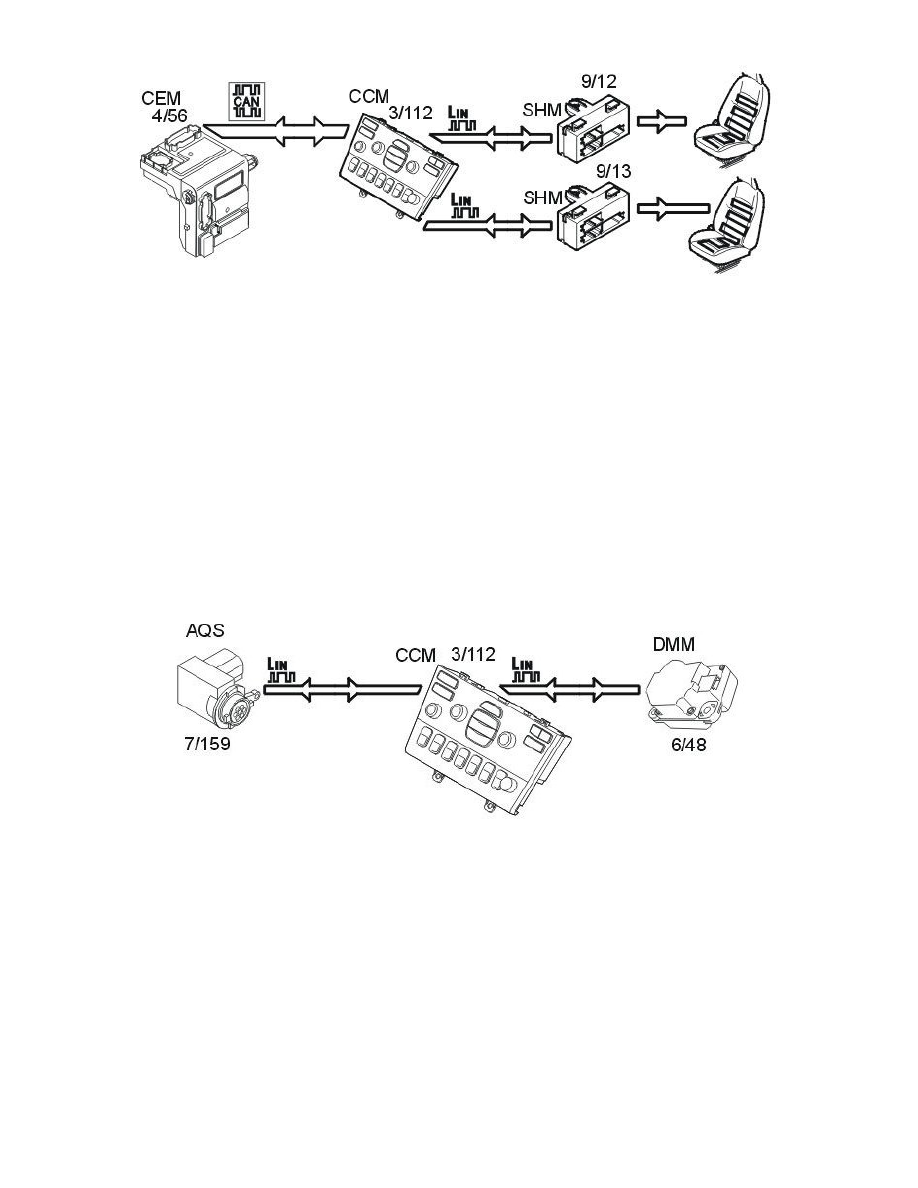S60 AWD L5-2.5L Turbo VIN 59 B5254T2 (2005)

The seat heaters are activated using the switches on the climate control module (CCM) (3/112). The function is normally switched off. When activating
the seat heaters, the first position is high temperature. If the button is pressed again, the temperature will be low. The status of the indication is displayed
via LEDs. The climate control module (CCM) transmits information about the selected temperature to the relevant seat heating module (SHM) on the
relevant LIN bus. The seat heating module (SHM) then controls the current to the heater pads.
Each seat heating module (SHM) then transmits its present status to the climate control module (CCM).
Communication between the climate control module (CCM) and each seat heating module (SHM) takes place in the following way:
-
seat heating module (SHM), driver's side (9/12) on LIN bus 1
-
seat heating module (SHM), passenger side (9/13) on LIN bus 2.
The climate control module (CCM) receives information from the central electronic module (CEM) (4/56) about the type of seat and upholstery via the
controller area network (CAN). The levels for high and low temperature are adapted for the relevant seat and upholstery by the climate control module
(CCM). To a certain extent, the levels for high and low temperature can be adapted to the wishes of the customer using VIDA.
Recirculation control (electronic climate control only)
For ECC, the climate control module (CCM) (3/112) controls the recirculation during the following conditions:
-
the recirculation switch is on (the LED lights orange)
-
the system is in AUTO mode and there is a large difference between the desired and current temperature
-
the car is equipped with an air quality sensor (AQS), and the recirculation switch is on (the LED lights green).
The air quality sensor (AQS) (7/159) transmits a signal to the climate control module (CCM) if it detects raised concentrations of pollutants in the
outside air. When this occurs, the climate control module (CCM) transmits a signal to the damper motor for recirculation (6/48) to close the fresh air
damper and to use recirculated air.
The degree of recirculation is controlled by the signal from the air quality sensor (AQS):
-
signal 1 provides partial recirculation for speeds below 85 km/h, no recirculation for speeds exceeding 85 km/h
-
signals 2 and 3 provide 100% recirculation.
If the high level of pollutants remains, the system stays in recirculation for a certain time, maximum of 10 minutes. The time that the system is
recirculating is determined by the outside temperature, whether the air conditioning (A/C) is on or if the windshield wipers are activated. The system
returns to fresh air for a short time before recirculation is resumed. The particle filter absorbs most of the pollutants entering the passenger compartment
during this time. The maximum time prevents misting and musty air.
